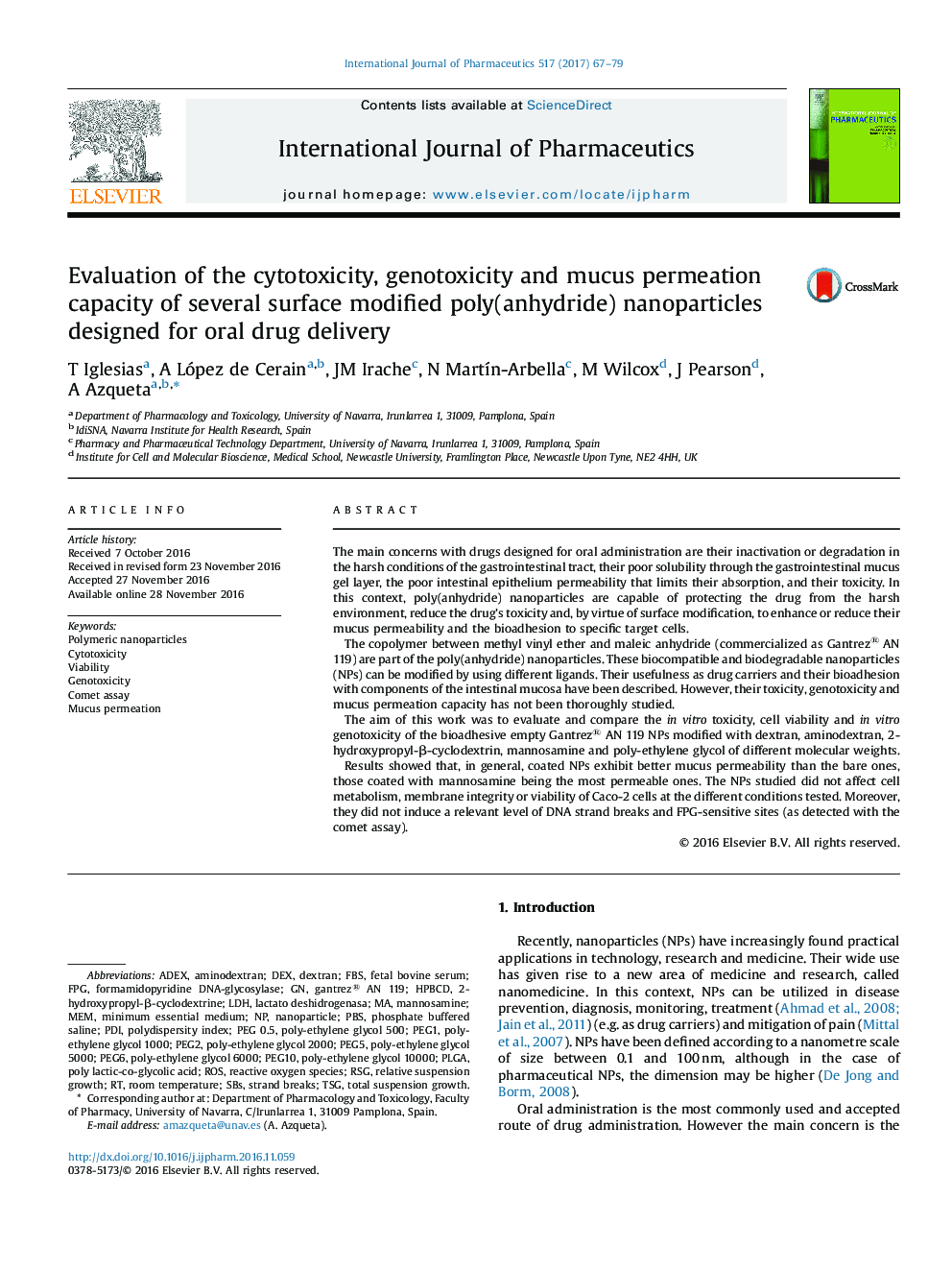| کد مقاله | کد نشریه | سال انتشار | مقاله انگلیسی | نسخه تمام متن |
|---|---|---|---|---|
| 5550758 | 1557300 | 2017 | 13 صفحه PDF | دانلود رایگان |
The main concerns with drugs designed for oral administration are their inactivation or degradation in the harsh conditions of the gastrointestinal tract, their poor solubility through the gastrointestinal mucus gel layer, the poor intestinal epithelium permeability that limits their absorption, and their toxicity. In this context, poly(anhydride) nanoparticles are capable of protecting the drug from the harsh environment, reduce the drug's toxicity and, by virtue of surface modification, to enhance or reduce their mucus permeability and the bioadhesion to specific target cells.The copolymer between methyl vinyl ether and maleic anhydride (commercialized as Gantrez® AN 119) are part of the poly(anhydride) nanoparticles. These biocompatible and biodegradable nanoparticles (NPs) can be modified by using different ligands. Their usefulness as drug carriers and their bioadhesion with components of the intestinal mucosa have been described. However, their toxicity, genotoxicity and mucus permeation capacity has not been thoroughly studied.The aim of this work was to evaluate and compare the in vitro toxicity, cell viability and in vitro genotoxicity of the bioadhesive empty Gantrez® AN 119 NPs modified with dextran, aminodextran, 2-hydroxypropyl-β-cyclodextrin, mannosamine and poly-ethylene glycol of different molecular weights.Results showed that, in general, coated NPs exhibit better mucus permeability than the bare ones, those coated with mannosamine being the most permeable ones. The NPs studied did not affect cell metabolism, membrane integrity or viability of Caco-2 cells at the different conditions tested. Moreover, they did not induce a relevant level of DNA strand breaks and FPG-sensitive sites (as detected with the comet assay).
141
Journal: International Journal of Pharmaceutics - Volume 517, Issues 1â2, 30 January 2017, Pages 67-79
